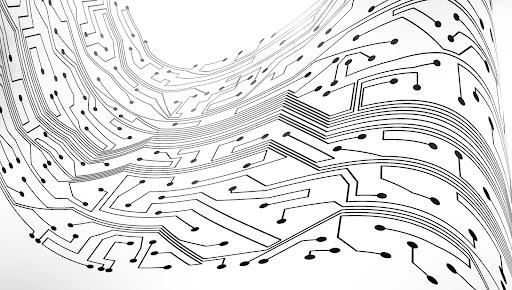Printed electronics are part of a rapidly evolving industry. At e2ip, we offer a variety of printed electronic technologies with applications in industries like aerospace, medical, defense, transport, and industrial.
To give you a better understanding of how printed electronics work, here is some useful information:
What are Printed Electronic Technologies?

Printed electronic technologies refer to electronics combined with various printing techniques, including screen printing, rotogravure printing, flexographie, spin-coating, vacuum evaporation, Offset, roll-to-roll and inkjet printing. Printed electronics is the umbrella term used to describe the process of printing circuits on a variety of flexible substrates to create electronic solutions.
As the demand for faster, thinner, lighter and more flexible electronics increases, printed electronics are reaching more and more industries and are becoming the must-have technology for various applications.
Where are Printer Electronics Used?
There are endless innovative applications where printed electronics can be integrated. Some typical examples are:
- Smart Molded Parts Smart Molded Parts also called In-Mold Electronics are a great example of widely used printed electronics. The printed circuit is integrated and molded in the unit and it allows for greater design freedom. This is the most innovative application of printed electronics as the thermoforming process creates new possibilities and can transform traditional control panels into smart curved surfaces.
- Lighting. Printed lighting solutions enable ultra-thin and light backlighting for keypads, annunciators, signage, seat indicators, ambience lighting and more. They offer amazing flexibility and the option to customize.
- Heaters. Lightweight, thin, and low energy consumption printed heaters can be applied to a wide range of surfaces, like food and beverage warming, heating IV bags, wing heating and de-icing, and seat, bed, wall and floor heaters
- Printed Sensors Printed electronics have proven to be an effective technology in creating thinner and more flexible sensors. They include various innovative features and respond to users’ demand for lighter and more interactive products. The printed sensors incorporate a printed conductive sensor which can detect signals and send direct feedback to the end user. This property is an essential element to data driven applications.
- Printed 5G Smart Surfaces. Also called Engineered Electromagnetic Surfaces (EES), are a printed electronics technology that reshapes electromagnetic propagation and enhances 5G wireless network by filtering, blocking or diffusing radiofrequency (RF) signals.
What are the Benefits of Printed Electronics?
-
They replace bulky electronics components by making the final product thinner and more innovative
-
Easy to integrate into multiple applications and components
-
Attractive and customizable design
-
Cost-effective
-
Lightweight

Printed electronics are part of a rapidly evolving, fast-paced industry. Choosing which printed electronic technology works best for you depends on what kind of application you will need it for.
e2ip’s printable electronic solutions are engineered using leading-edge materials and processes. They are integrated into OEM products to meet or improve specific requirements.
What is Screen Printing and Conductive Inks?
Screen printing is a printing technique of creating a picture or a pattern by forcing ink or conductive ink onto a surface through a screen of fine material. This technique is common for the printing of components related to printed electronics, such as the visual (commonly known as the Graphic Layer) and the conductive layer (commonly known as the Circuit Layer).
Conductive Ink

In the process of manufacturing printed electronics, the printing of the conductive ink is an essential component to the functionality of the products. Conductive inks such as our MINK are special inks designed to conduct electricity. They are used to print flexible printed electronic circuits on various types of materials and make objects more communicative or capable of storing information.
If you have any questions about printed electronic technologies, conductive inks, or screen printing, the professionals at e2ip can help.
Contact us today.


